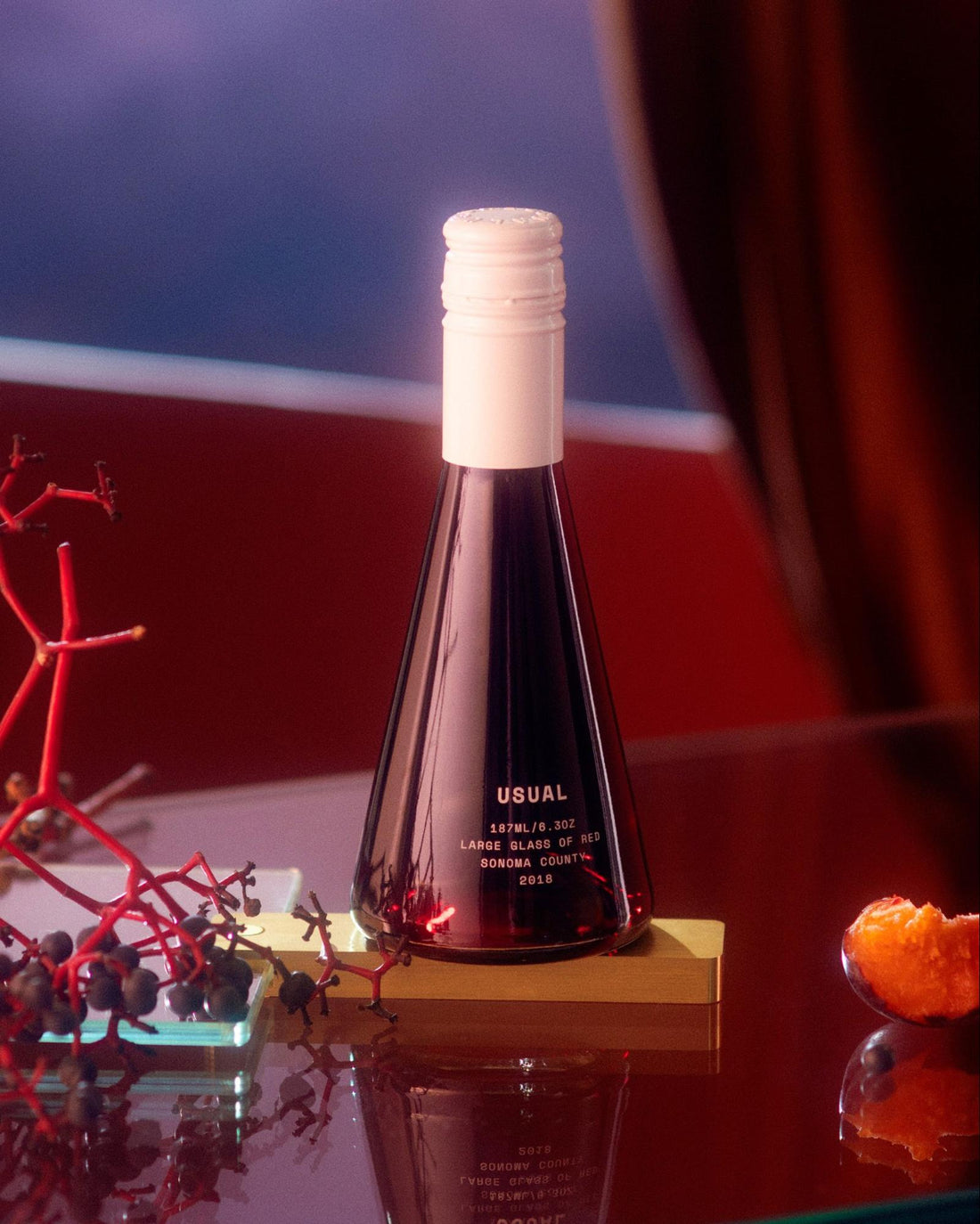
Carignan Wine: Unraveling the Richness of Carignan Grapes and Carinena Varieties
McKenzie HaganAs a red wine lover, you already know the greatest hits: Cabernet Sauvignon, Merlot, Pinot Noir, and Zinfandel. But there's one red wine you might not know much about — Carignan.
With a reputation as an affordable (and maybe even "cheap") table wine, Carignan might not get the accolades of its more famous (and often more expensive) crimson-hued counterparts, but it's certainly worth discovering.
Get ready to learn everything you never knew you needed to know about Carignan wine, including where it comes from, how it's made, how it compares to other types of wine, and how to best enjoy it.
What Is Carignan Wine?
Pronounced care-een-yawn, Carignan is a black-skinned wine grape variety. It's thought to be native to the northeastern region of Spain that spans Aragon and Catalonia.
Although it's mostly grown in Southern France — especially the Languedoc-Roussillon wine region — this red wine grape is common along the Mediterranean coast, particularly on the island of Sardinia. Carignan grapes prefer warm climates and are also cultivated around the world from Algeria and Australia to Chile and California.
Carignan goes by a variety of names depending on where it's from or where you're drinking it. Some of the names you'll likely come across include:
- Carignano (Italy)
- Cariñena, Mazuelo, or Samsó (Spain)
- Carignane (United States; notice the extra "e")
Carignan vines are naturally high yield and require little water, which is a big part of why they're used to produce such affordable wine. In fact, back in the ‘70s and ‘80s, Carignan became France's most planted wine grape. As a result, it was overproduced and got a rep as low-quality bulk booze.
Fortunately, winemakers today are giving Carignan grapes the respect they deserve — particularly those grown on old vines. These older grapes are more delicate (they're susceptible to powdery mildew and rot) and don't grow so abundantly. Consequently, these old-vine Carignan grapes produce wine with a richer taste and smoother finish.
Carignan Wine Tasting Notes

Cariñena is primarily known as a dry, fruity, medium-bodied red wine with high tannins and pronounced acidity. It's most commonly blended with other grapes – most famously Grenache, Mourvedre, and Syrah.
The most dominant flavors of Carignan wine include:
- Red fruit such as cherry, raspberry, and cranberry
- Licorice, baking spices, and pepper
- Cured meat (Yes, it's true — it pairs well with charcuterie!)
How Is Carignan Wine Made?
As with all types of wine, Carignan begins its journey in the vineyard. Once these red wine grapes are picked from the vines, they're pressed and then fermented. Depending on the winemaker, they may carry out the grapes' fermentation process in oak barrels, steel vats, or even amphoras, which are clay vessels that have been used for centuries. (Be sure to check out our guide on the history of wine for a fascinating journey back in time. We promise it'll deepen your appreciation of the odyssey from grape to glass.)
For the most part, Carignan wine is produced as a blended wine rather than a single varietal wine. It's made to be dry, meaning there's little residual sugar after fermentation. While it has fruity notes, it's not a sweet wine.
That said, if you have a bit of a sweet tooth, don't miss our sensational story on sweet wines. (They're not as syrupy as you think.) And if you're trying to cut back on your sugar intake, you'll simply go gaga over our guide to sugar-free wine.
How To Enjoy Carignan Wine

Now that you know a bit more about Carignano, it's time to drink it like a pro. Before opening your first (or second) bottle, review these handy tips to ensure you choose the best wine temperature, food pairings, and type of wine glass.
Temperature
Surprising as it might sound, red wines like Carignan shouldn't be served at room temperature. Read the complete guide to wine temperature if you don't believe it! Serving your red wine too warm can create a bitter and overly alcoholic taste, leaving you with a burning sensation in your throat not unlike the kind you get when chugging down cheap whiskey. (Not that you've ever done that.)
For best results, serve this lovely red wine between 55-60 degrees Fahrenheit. You can chill it in the fridge for about 30 minutes, then open the bottle and let it sit for 10 minutes. You could also use a decanter if you're feeling fancy. Either way, allowing your vino to sit for a spell will let it breathe. This helps to release its aromas and enhance the flavors before taking your first sip.
Food Pairings
Thanks to its pronounced acidity, high tannins, and meaty notes, Carignan wine is an excellent partner for flavorful meat dishes such as spicy lamb meatballs, beef brisket, or roasted pork. It also pairs well with rich poultry dishes like roasted duck or smoked turkey legs.
You can also try Cariñena with pastas featuring earthy vegetables such as eggplant lasagne, mushroom risotto, or pumpkin ravioli. Naturally, it's also fantastic with charcuterie (sausage, bacon, ham, terrines) that pick up on the wine's notes of cured meat.
For delectable cheese pairings, you can't miss with rich, full-flavored cheeses like Parmesan, aged Gouda, and manchego.
For dessert, a red wine like Carignan goes great with anything dark chocolate. You can also try bringing out its fruity flavors with complementary desserts such as cherry pie, raspberry parfait, or fresh berries. Another yummy idea: enhance the wine's spiced notes by pairing it with sweet or savory foods that have a hint of cinnamon, clove, nutmeg, or allspice.
Type of Wine Glass
You can't judge a wine by its cover, but you can change the taste of it by the shape of the glass. It might sound bougie, but science shows that the type of wine glasses you use affect the way you perceive the flavor and fragrance of wine.
As such, when sipping on Carignan wine, you'll want to use a standard red wine glass. It's probably what comes to mind when you think of the typical wine glass. With a mid-size mouth and bowl size, it's perfect for medium- to full-bodied red wines like Carignan, Malbec, or Merlot. You could also try a Burgundy glass, which has a wider, round bowl to give your wine even more room to breathe.
Of course, there's always at least one exception to the rule. Case in point: our delicious Usual Wines red wine blend, which you can enjoy straight from the bottle. It's fruity, fabulous, and made in small batches from sustainably farmed grapes with no additives. With wine this good, who needs a glass?
Carry On With Carignan Wine
Carignan wine hasn't always had the most stellar reputation. For many years, it was overproduced, leaving much to be desired in terms of flavor and finish. Fortunately, that's no longer the case.
It's been steadily making a comeback over the last several years thanks to vintners who are taking a more careful approach to cultivating these red wine grapes – and blending them with other varietals to produce flavorful wine you'll savor.
Discovering "new" old favorites like Carignan wine is one of the joys of being an oenophile, so give it a try. For more ways to make the most of every sip, don't miss our Usual Wines blog, which is brimming with helpful tips and useful info.







